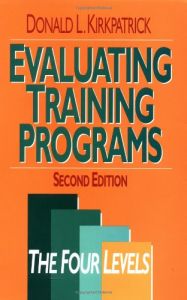Join getAbstract to access the summary!

Join getAbstract to access the summary!
Donald L. Kirkpatrick
Evaluating Training Programs
The Four Levels
Berrett-Koehler, 1998
What's inside?
Are your firm’s training programs working? Here’s how to measure their reaction, learning, behavior, and results. In other words, did participants gain new skills, did their behavior change, and are they now more effective?
Recommendation
Donald L. Kirkpatrick presents a system for evaluating the effectiveness of a training program. The system assesses four types of information: the reactions of the participants, the learning they achieved, changes in their behavior, and the final business results (such as increased production, improved quality, decreased costs, or higher profits). This solid, organized approach to evaluation includes guidelines, sample questionnaires, charts and formulas, as well as case studies of companies using this approach. However, because it is fairly dry and technical, this book primarily will interest those who run or rely upon training programs. The summaries of the first chapters - covering the evaluation system - can provide managers and executives with a general idea of this approach and the research involved. But getabstract particularly recommends this book to those leading training programs, because they can use its specific material as a reference when undertaking evaluations.
Summary
About the Author
Donald L. Kirkpatrick is a former national president of the American Society for Training and Development. He regularly conducts evaluation workshops. He has consulted on management training and development for companies including Blockbuster, Coca-Cola, Eastman Kodak, GE, and IBM. His previous books include How to Train and Develop Supervisors and How to Manage Change Effectively.


















Comment on this summary